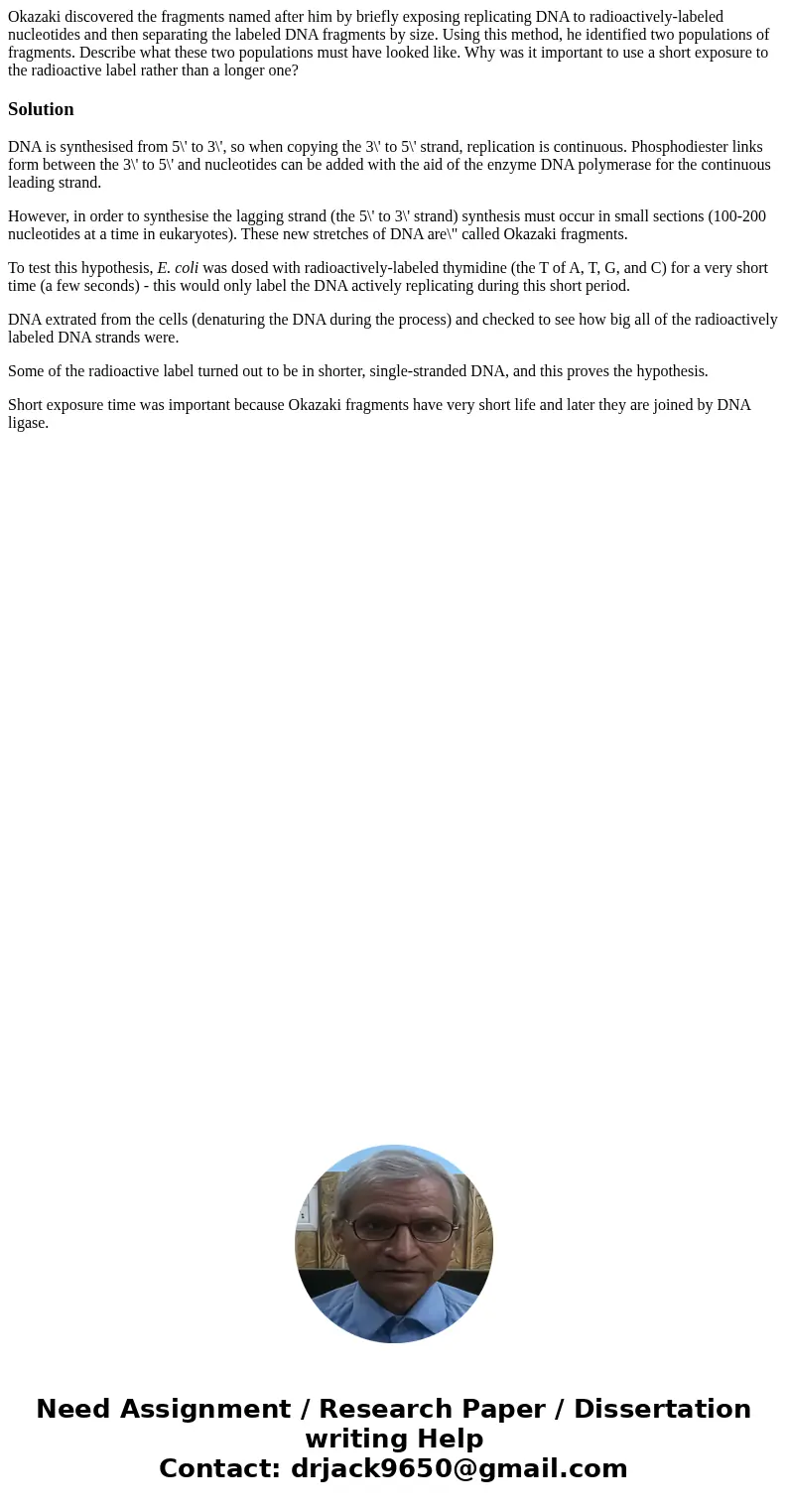Okazaki discovered the fragments named after him by briefly
Okazaki discovered the fragments named after him by briefly exposing replicating DNA to radioactively-labeled nucleotides and then separating the labeled DNA fragments by size. Using this method, he identified two populations of fragments. Describe what these two populations must have looked like. Why was it important to use a short exposure to the radioactive label rather than a longer one?
Solution
DNA is synthesised from 5\' to 3\', so when copying the 3\' to 5\' strand, replication is continuous. Phosphodiester links form between the 3\' to 5\' and nucleotides can be added with the aid of the enzyme DNA polymerase for the continuous leading strand.
However, in order to synthesise the lagging strand (the 5\' to 3\' strand) synthesis must occur in small sections (100-200 nucleotides at a time in eukaryotes). These new stretches of DNA are\" called Okazaki fragments.
To test this hypothesis, E. coli was dosed with radioactively-labeled thymidine (the T of A, T, G, and C) for a very short time (a few seconds) - this would only label the DNA actively replicating during this short period.
DNA extrated from the cells (denaturing the DNA during the process) and checked to see how big all of the radioactively labeled DNA strands were.
Some of the radioactive label turned out to be in shorter, single-stranded DNA, and this proves the hypothesis.
Short exposure time was important because Okazaki fragments have very short life and later they are joined by DNA ligase.

 Homework Sourse
Homework Sourse